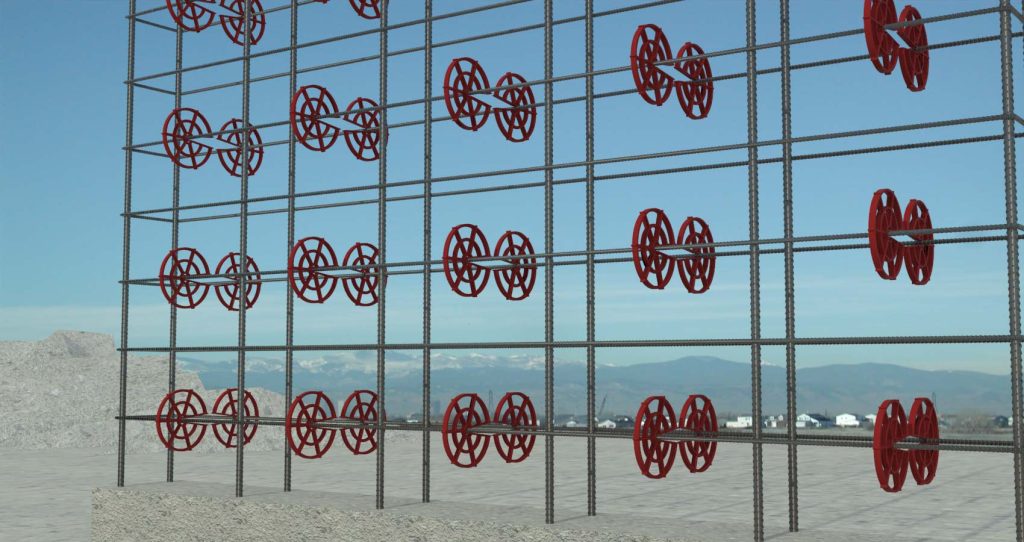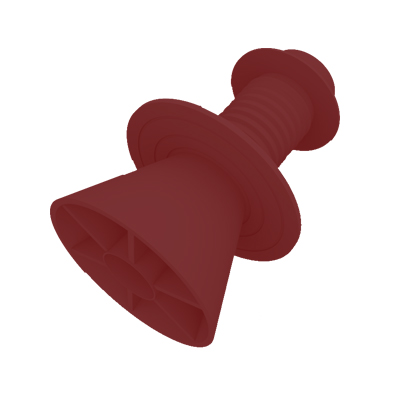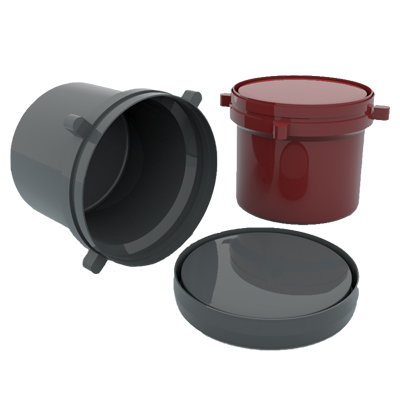wheel fix spacer
- Providing precise concrete coating on vertical surfaces
- Does not create barriers against fluid concrete
- Very strong locker in its center for rebar placement
Description
wheel fix spacer
To ensure proper concrete cover on vertical surfaces, circular spacers such as wheel fix spacer, Solar spacers, and Round spacers are used. In vertical surfaces, as with other structural elements, ensuring proper concrete cover for rebar is essential. It is commonly observed that in concrete walls or columns, part of the poured concrete is directly exposed to the air, causing the rebar to rust. This issue arises due to the failure to maintain the standard concrete cover, where rebar is too close to the surface in some areas, leaving insufficient cover. As a result, environmental factors penetrate the concrete, causing the rebar to corrode. This corrosion leads to the expansion of the rebar, ultimately damaging the concrete section.
These types of spacers are particularly effective for vertical surfaces like walls, columns, and circular sections in both cast-in-place and precast concrete. The wheel fix spacer is designed according to BSI 7973 standards to prevent obstruction to flowing concrete. The Solar spacers feature strong locks in their center to securely hold the rebar. The legs surrounding the this spacers provide resistance to vibrations and strong movements during pouring, ensuring that no damage occurs to the surface of the concrete. Additionally, these legs prevent harmful ions, such as chloride, sulfate, and acids, from penetrating the concrete.
Using wheel spacer on vertical surfaces has the advantage of ensuring that rebar grids are aligned perfectly parallel to the formwork, preventing rebar misalignment. The load-bearing capacity of wheel fix spacer depends directly on the diameter and size of the rebar, and they are precisely designed for each rebar size.
The presence of legs around thisspacers makes them resistant to vibrations during pouring, thus preventing harmful substances from infiltrating the concrete. Therefore, using these spacers helps protect the concrete from potential damage and stops the penetration of harmful ions and acids. On vertical surfaces, these spacers ensure that the rebar grids are properly aligned, preventing any misalignment of the rebar inside the formwork.

Applications wheel fix spacer
- Provides precise and standard concrete cover on vertical surfaces
- Does not obstruct the flow of liquid concrete during pouring
- Equipped with a strong central lock that securely holds the rebars in place
- Resistant to strong vibrations caused by the vibration process during concrete pouring
- Prevents the penetration of harmful ions such as chlorides, sulfates, and acids into the concrete
- Prevents the entangling and misalignment of rebars inside the formwork
More products: Spacer
Features wheel fix spacer
- Prevents the entangling of rebars within the reinforcement network
- Prevents the vibration and movement of rebars during the concrete pouring process
- Maintains parallel alignment of rebars with the formwork, ensuring accuracy in formwork setup
- Increases the accuracy of rebar spacing
- Improves the service life and durability of the structure
- Reduces maintenance and repair costs
- Prevents the movement of rebars during concrete pouring
How to Use
The wheel fix spacer is typically installed vertically on stirrups (rebar ties).
In certain structural conditions, the round plastic spacer may also be placed on the main rebars.
packing
| Name | Size | Bar size | Packing (QTY) | WEIGHT (KG) |
| Wheel fix 20 | 20 | 8 – 6 | 1000 | 8/5 |
| Wheel fix 25 | 25 | 8 – 16 | 1000 | 9/2 |
| Wheel fix 30 | 30 | 8 – 20 | 750 | 8/8 |
| Wheel fix 40 | 40 | 8 – 20 | 400 | 6/8 |
| Wheel fix 50 | 50 | 8 – 20 | 300 | 6 |
| Wheel fix 50 | 50 | 10 – 28 | 200 | 5 |
| Wheel fix 60 | 60 | 8 – 20 | 200 | 6/5 |
| Wheel fix 75 | 75 | 8 – 14 | 150 | 6 |
| Wheel fix 75 | 75 | 12 – 28 | 150 | 5/8 |
| Wheel fix 100 | 100 | 12 – 28 | 100 | 7/5 |






Reviews
There are no reviews yet.